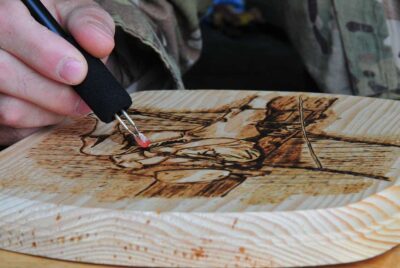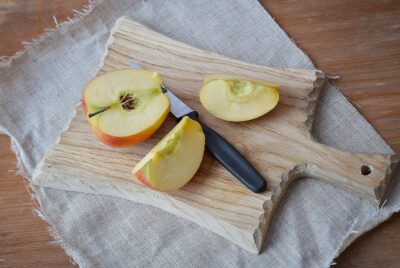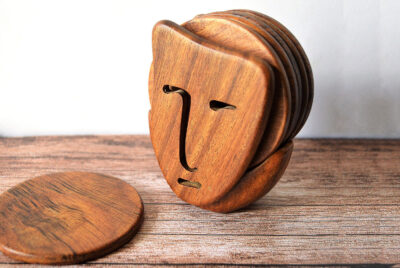Woodworking Tools: 10 Musts Every DIY Enthusiast Should Own
Let’s face it—woodworking is all about having the right tools to bring your creativity to life. Whether you’re crafting a simple birdhouse or building custom furniture, these 10 woodworking tools are essential to getting the job done with precision and ease. Get ready to fall in love with these trusty tools that’ll make your DIY projects smoother, faster, and a whole lot more fun!
Why Having the Right Tools Matters
Think of woodworking like baking a cake. Without the proper tools, it’s tough to get the results you’re aiming for! Just like you wouldn’t bake a cake without a mixing bowl, you shouldn’t try woodworking without the right tools. The right woodworking tools will help you create smooth edges, accurate cuts, and professional-looking finishes. They also save you time and energy, making the whole process more enjoyable. So, let’s dive in and explore the 10 must-haves every DIY enthusiast should have in their workshop!
1) The Trusty Tape Measure: Your Best Friend in Precision
Why You Need It
You might think of a tape measure as a simple tool, but it’s the backbone of every woodworking project. Whether you’re measuring lumber for a bookshelf or ensuring your cuts are precise, this tool will quickly become your best friend. From planning your cuts to verifying dimensions, having a reliable tape measure on hand is key to creating projects that fit perfectly.
Features to Look for When Buying One
When selecting a tape measure, look for durability, clear markings, and a sturdy locking mechanism. A magnetic end is a fantastic bonus—it’ll stick to metal surfaces, making one-person measuring so much easier. Choose one that’s comfortable to hold, and be sure to pick one that’s at least 25 feet long to handle most projects. You’ll be amazed at how often you reach for it!
2) Claw Hammer: For More Than Just Nails
Versatility in the Workshop
The humble claw hammer is far more than just a nail-pounder. It’s also fantastic for removing nails, adjusting boards, or even light demolition work! Whether you’re assembling furniture, putting together a frame, or deconstructing an old shelf, your hammer will always be by your side. A good, versatile claw hammer is something every woodworker should have in their collection.
Choosing the Right Weight and Handle
When shopping for your hammer, go for one that feels balanced in your hand. Wooden handles offer a traditional feel and help absorb shock, while fiberglass handles provide extra durability and strength. The weight should match the tasks you’ll use it for—generally, a 16-ounce hammer is a good starting point for most woodworking projects.
3) Circular Saw: Cutting Through Projects Like Butter
Why It’s a Must-Have for DIYers
If you’re tackling large pieces of wood, a circular saw is your best friend. It can quickly cut through lumber, plywood, and even MDF, making your woodworking projects easier and faster. Whether you’re building furniture or cutting down wood for a home improvement project, this tool is a must-have to save you time and effort.
Blade Types and Safety Tips
Choose the right blade for your project—carbide-tipped blades are a great choice for durability and longevity. Always follow the manufacturer’s safety guidelines, wear protective goggles, and make sure to use clamps to secure your wood while cutting. Safety first, always!
4) Power Drill: A Hole-in-One for Every Project
Cordless vs. Corded: Which Is Better?
Power drills are versatile tools that can handle a variety of tasks, from drilling holes to driving screws. When choosing between a cordless and corded drill, it comes down to your specific needs. Cordless drills give you mobility, while corded drills offer consistent, powerful performance. Think about the projects you’ll be doing and choose accordingly. If you need flexibility, go for cordless. If you’ll be working in a fixed space with heavy-duty tasks, corded might be the better option.
Attachments That Take It to the Next Level
A power drill can do so much more than just drilling holes! Attachments like sanding pads, hole saws, and specialty bits can turn your drill into a multi-functional tool. From sanding rough surfaces to drilling large holes for your woodworking tools, a versatile power drill is an absolute must for every DIY enthusiast.
5) Chisels: For Fine-Tuning and Carving
Types of Chisels You’ll Want
Chisels are perfect for fine-tuning edges, carving intricate designs, or smoothing out rough spots. Having a variety of chisels in your toolbox is important, with bench chisels being the most common for general woodworking tasks. Mortise chisels and paring chisels are also great additions for more specialized work.
Keeping Them Sharp
A sharp chisel is a safe and effective chisel. Keep yours in tip-top shape with a sharpening stone or chisel jig. Maintaining a sharp edge ensures clean cuts, reduces frustration, and keeps your hands safe from unnecessary force. A quick hone before every major project will make a huge difference.
6) Handsaw: The Classic Tool That Never Goes Out of Style
When to Use a Handsaw Over a Power Tool
Sometimes, simplicity is best. Handsaws are ideal for small, detailed cuts where power tools might be too bulky or overpowered. They’re great for making precise cuts in tight spaces, and their simplicity allows you to work without the noise or hassle of electricity. Plus, there’s something satisfying about the rhythm of a well-used handsaw!
Different Types of Handsaws
From crosscut saws to rip saws, there’s a handsaw for every job. A crosscut saw is perfect for cutting across the grain, while a rip saw works wonders for cutting along the grain of the wood. Find the one that best fits the type of cuts you’ll be making.
7) Adjustable Wrench: Because Things Always Need Tightening
Why Adjustability Matters
An adjustable wrench is a must-have in any toolbox. This versatile tool can fit a wide range of bolt and nut sizes, eliminating the need for a whole collection of individual wrenches. It’s especially handy when you’re working with a variety of materials or when you don’t want to keep track of multiple tools.
How to Keep It in Top Shape
To keep your adjustable wrench working smoothly, clean it regularly and oil the moving parts. This will ensure it continues to operate well and maintain its longevity. A little care goes a long way, and this tool will serve you well for years to come.
8) Sanding Tools: Smooth Is the Name of the Game
Hand Sanders vs. Power Sanders
When it comes to sanding, you have options. Hand sanders offer great control for detailed work, while power sanders make quick work of large surfaces. A combination of both tools will cover all your sanding needs. For fine projects, a hand sander offers more precision, but for bigger tasks, a power sander will save you time.
Sandpaper Grit: What You Should Know
The grit of your sandpaper plays a crucial role in how smooth your surface will be. Coarse grit (40-60) is great for rough shaping, while medium grit (80-100) helps remove marks and imperfections. Finish up with fine grit (120-220) for a perfectly smooth surface. The right sandpaper makes all the difference!
9) Workbench: The Heart of Your Workshop
Features to Look for in a Good Workbench
A solid workbench is the backbone of your workspace. Look for one that’s sturdy, offers enough surface area, and has built-in storage options. Having clamps and tool racks built into your bench can save you space and streamline your workflow, making it easier to stay organized and efficient.
Why Customizing Your Bench Makes a Difference
If you’ve got a little more room to play with, customizing your workbench can truly transform your workspace. Adding things like a tool rack, a power strip, or an extra vice can make your bench not just a surface, but a command center for your woodworking projects. The more tailored your bench is, the more comfortable and productive you’ll be.
10) Safety Gear: Because Your Health Comes First
Must-Have Items Like Goggles and Gloves
Safety gear isn’t something to overlook. Goggles, gloves, and hearing protection should always be worn when working with woodworking tools. Protecting your eyes from flying debris and your hands from sharp edges is essential, and ear protection can help keep your hearing safe when using loud tools like saws and drills.
Bonus Safety Tips for Woodworking
It’s always good to keep a first-aid kit nearby, just in case. Familiarize yourself with the safety instructions for each tool and use them as intended. Remember, safety is an ongoing practice, so stay aware and prepared.
How to Maintain and Organize Your Tools
Taking care of your tools ensures they stay in good condition and continue to perform at their best. After each use, clean your tools and store them in a dry, organized space. Pegboards and tool chests can help keep your tools neat, making it easier to find exactly what you need when you need it.
Conclusion
There you have it—the 10 woodworking tools every DIY enthusiast should own! These tools will help you take on any project with confidence, from simple repairs to intricate furniture designs. So go ahead, get your hands on these must-have tools, and let your creativity shine!
FAQs
- Do I need all these tools to start woodworking?
Not necessarily! Start with the basics like a tape measure, hammer, and handsaw, and add more tools as your skills grow. - How do I choose the best tools?
Look for quality, durability, and feel. It’s always a good idea to check reviews and ask other woodworkers for recommendations. - Are power tools better than hand tools?
It depends on the job! Power tools save time and effort, while hand tools provide more control and precision. - How often should I sharpen chisels and blades?
Sharpen them whenever they feel dull. Regular maintenance will keep them sharp and ready for any project. - What’s the best way to store woodworking tools?
Keep them organized on a pegboard or in a toolbox. A dry, clean storage space helps prevent rust and keeps your tools in top shape.
For more tips on woodworking tools, check out this guide on woodworking handsaws or watch this video about various types of sandpapers for woodworking.




